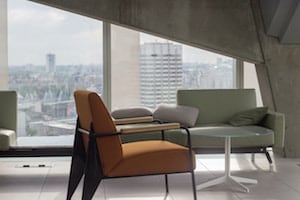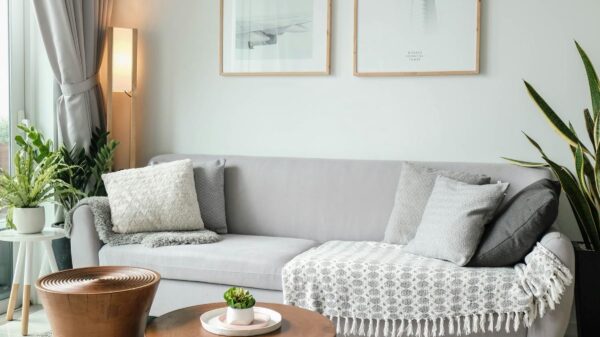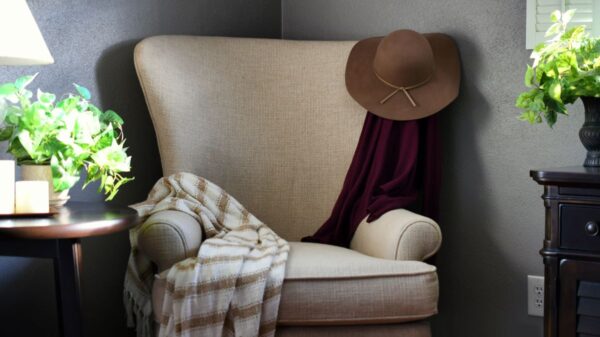Furniture Ideas for Modern Homes
As the heart and soul of any dwelling, furniture plays a pivotal role in determining the comfort and aesthetic appeal of our living spaces. Deeply intertwined with our routines and lifestyle, its design and functionality speak volumes about our tastes and needs. This article aims to delve deep into the realm of furniture design, exploring how necessity breeds innovation and transforms space utilization.
We will also explore the latest innovative furniture ideas for modern homes. We will also cover opportunities within this thriving industry for potential investors, it also underscores the rising interest in sustainable designs that seek to harmonize our consumer needs with the environment. Join us as we journey through the creativity, functionality, and environmental stewardship shaping the future of furniture.
Exploring Necessity and Innovation in Furniture Design
The constant evolution of market needs is a powerful catalyst for innovation in every sector, and nowhere is this more evident than in the realm of furniture design. As markets shift and evolve, smart entrepreneurs in the furniture business constantly adapt to keep up, their every move testimony to an underlying principle of business: adapt or perish. So how exactly do market needs spur creativity and novelty in furniture design?
To begin with, contemporary consumers demand sustainability. Walk on any street, flip through any magazine, and the message is clear: going green is ‘in’. People are no longer satisfied with merely having a place to park their assets; they want to be able to do so without compromising on the well-being of the planet. This push for eco-friendly solutions has led to the creation of an exciting spectrum of furniture options made from recycled materials, whether it’s chairs fashioned out of old skateboards or tables composed of reclaimed wood.
But the environmentally conscious wave is only one side of the coin. Emerging trends in technology also play a big role. Homeowners today want smart homes, and this desire extends to their furniture as well. This has led to the rise of technological integration within furniture design, from sofas and beds that can track your sleep and postures, to tables with built-in charging ports and LED lights. Such cutting-edge design elements not only add comfort and convenience but also help create a truly modern and technologically advanced living environment.
Demographic Shifts
Not to be left out, the demographic shifts and changing social dynamics are also impacting furniture design. Today’s millennials and Gen Zs prefer minimalistic and multifunctional furniture due to their changing lifestyles and space constraints. Think convertible sofas or multipurpose coffee tables that offer practicality with a minimalist aesthetic. This is not only a trend but a testament to the adaptability of the industry, ever ready to cater to the nuanced requests of changing market demographics.
As the world becomes increasingly global and cultures blend, the demand for furniture that reflects this cultural fusion is growing. One can find a Scandinavian-designed chair produced in Asia, influenced by North American tastes. This global influence has expanded the terrain of furniture design, inspiring entrepreneurs to amalgamate styles from different parts of the world to create fresh, appealing designs.
In summary, the pulse of business innovation in furniture design is driven by the ever-changing market needs, be it the demand for sustainable, technology-encompassing, minimalistic, or culturally diverse products. Strategic entrepreneurs in the furniture business don’t just respond to these shifts – they anticipate them, leveraging market evolution as a springboard for ceaseless product innovation. Where others see change, they see opportunity.
Whether you’re a startup looking to make a mark in the competitive furniture industry, an established furniture company aiming to stay pertinent, or a consumer interested in the latest trends, being aware of and adapting to these market transformations can make all the difference. By fostering an interest in innovative furniture ideas for modern homes, you’re preparing yourself for the future.

Revolutionizing Space Utilization Through Furniture
Modern furniture has moved beyond aesthetics and comfort to also focus on how people interact with their living spaces. A significant trend emerging in the industry is the use of furniture to transform and optimize space utilization in homes. This is a crucial innovation, especially in urban settings where available space is at a premium.
Adaptable furniture that changes according to the user’s needs is at the forefront of this trend. Consider a fashionable sofa that transforms into a comfortable bed in the blink of an eye, essentially providing dual functionality. Another example is the rise of expandable dining tables, equally suited for intimate family dinners or large gatherings. These innovative designs embody the ethos of space optimization in modern furnishings.
There are other niche trends as well. For instance, modular furniture allows users to customize their spaces by adding or removing sections as per requirement. This ‘Lego-like’ approach to furniture unleashes creativity and facilitates efficiency in space utilization. In pattern with this, the rising popularity of vertical furniture takes the concept of space optimization to a whole new level. By exploiting vertical space which is typically under-utilized, furniture designers can provide additional storage options without swallowing up valuable floor space.
Furthermore, modern furniture is taking giant strides in integrating smarts. The advent of smart furniture permits interaction with other smart devices in your home and reduces clutter. Picture a sleek coffee table that also functions as a wireless charger, a music player, and a mini refrigerator. Technology is being seamlessly woven into the design, and the result is the smarter and more efficient use of space.
However, the transformation does not end here. Modern furniture is also aiming to create a healthier living environment. Ergonomic furniture designs encourage better posture, leading to an overall improvement in physical well-being. Even the materials used are a consideration – many manufacturers are choosing sustainable materials, such as bamboo or recycled materials, taking a stand for the environment while also catering to the consumer demand for eco-friendly options.
In conclusion, the modern furniture industry is enhancing the living experience by transforming space utilization in homes. Manufacturers are getting creative and consumers are reaping the benefits – homes are becoming smarter, more efficient, and more personalized than ever before. The paradigm of furniture design is shifting and it is thrilling to watch this space unfold.
Investment Opportunities in the Furniture Industry
Diving into one of the oldest industries, dating back centuries, does not mean we are taking a step back in time. Instead, many savvy investors are finding lucrative opportunities in the evolving furniture industry. So, what are these promising areas worth placing a bet on?
First, let’s unfold the trend towards the luxury market. The craving for personalized, high-quality furniture has grown exponentially. It’s not just about prestige or showing off wealth either. It reflects an appreciation for craftsmanship, materials, and design that is both timeless and robust. Despite higher price tags, luxury furniture promises longevity – a unique selling point in a throw-away culture.
A special mention should be made of the rise in furniture rental services. Yes, rent – not purchase! With a generation more transient than ever, there is an increased demand for high-quality, yet temporary furnishings. This sector addresses the need for flexibility and sustainability, making it a potential treasure trove for forward-thinking investors.
Next up – e-commerce in the furniture industry. The success of businesses like Wayfair and IKEA’s online platforms signal a radical shift in consumer behavior. While once it was seen as strange to buy a sofa or bed without physically sitting or lying on it, today’s consumers are perfectly comfortable making these purchases online. The market is ripe for disruptors who can blend technology, convenience, and appealing product offerings.
Finally, the rise in demand for specialty furniture products is undeniable. From pet furniture to ergonomically designed office chairs, consumers increasingly desire pieces that cater to specific needs and niche markets. For the discerning investor, this offers a rich buffet of opportunities, where the focus is on specialization and customization.
Where does this leave us? It’s clear to see that the furniture industry is not merely about supplying pieces to sit, sleep, or eat on. It is progressing into a market that responds to our evolving lifestyle needs and desires. Opportunities for promising investments are available for those with the insight and courage to explore this thriving landscape. Embrace change, adapt, innovate, and success could well be yours to enjoy. After all, in the world of business, the only thing truly sitting still should be the furniture.

The Future of Furniture: Sustainable Designs
Sustainability: The Core of Innovation in the Furniture Industry
No industry remains static, and the furniture market is no exception. Today, the echoes of sustainability resonate through the corridors of this colossal industry. Authentic, enduring, and resourceful – hereafter we delve into how sustainable designs are genuinely redefining the future of the furniture industry.
Craftsmanship with a Conscience
Consumers are rapidly shifting focus from mass-produced items to products that show a clear care for the environment. Crafting furniture from sustainably sourced materials reduces the strain on natural resources. Designers and manufacturers, aligning with this ethos, are creating beautiful pieces from reclaimed wood, bamboo, and rattan, all while maintaining a high-quality standard that matches consumer expectations.
Durability is Back in Design
In a throwaway society, the furniture industry is standing tall with its commendable commitment to durability. High-quality construction and timeless designs are attributes of sustainable furniture pieces, reducing the need for frequent replacements. This philosophy of longevity not only contributes to waste reduction but also caters to consumers seeking value for their investment.
Circular Economy: From an Idea to Practice
The furniture industry is stepping into the promising era of the circular economy. Recycling is integral to this model. Companies have started offering take-back services where customers can return their old furniture. These items are either resold, reused, or recycled, further reducing waste and promoting resource efficiency. This practice nurtures a relationship of trust with customers who appreciate the commitment to a greener footprint.
Small Steps Towards a Bigger Cause: Furniture Leasing
As unconventional as it may sound, furniture leasing is gaining steam in this era of sustainable living. Buying new, especially for short-term needs, is out. Striving to promote the idea that “less is more,” the industry is noticing a surge in furniture rental services. This service prevents wastage and reduces pressure on raw materials, reaping environmental and economic benefits alike.
Drawing Lines Beyond Borders: The Role of E-commerce
E-commerce is the secret ingredient spicing up the future of sustainable furniture. Virtual stores break geographical limitations and significantly reduce the carbon footprint compared to traditional retail channels. E-commerce platforms focus on a broader audience reach, achieving their sustainability goals with centralized production and minimal physical infrastructure.
Conclusion
In conclusion, the shift towards sustainability in the furniture industry depicts a responsible market that understands the discerning consumer of today while keeping an eye on the health of our planet tomorrow. One piece at a time, the industry is striking a harmonious balance between comfort, aesthetics, and conscientious consumption. The future of the furniture industry scintillates with vast possibilities and greener hope, all pivoting around a sustainable core. Understanding the role of innovative furniture ideas for modern homes is pivotal in this journey.
The world of furniture design reflects the interplay between necessity and innovation as it shapes our living spaces. Finding new innovative furniture ideas for modern homes is an exciting and crucial part of this journey. As we gaze into the future, embracing space-efficient, multifunctional, and foldable designs seems imperative in today’s urban landscape.
The furniture industry presents enticing investment opportunities, buoyed by its growth factors and intriguing dynamics. Moreover, the gradual shift towards sustainable designs signifies a profound change in consumer sentiment. This beckoning trend towards eco-friendly and zero-waste products testifies to the power of collective responsibility in steering industrial innovation towards a greener path, painting a hopeful picture for the future of the furniture industry.





























